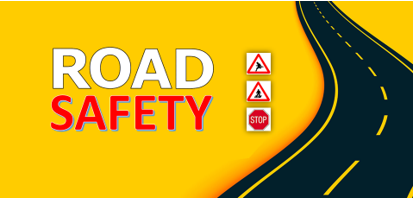
Ensuring the safety of children on the roads of India is a matter of utmost significance. According to data from the World Health Organization, India unfortunately holds one of the most alarming records for road traffic fatalities globally, with children facing a particularly high level of vulnerability to these incidents.
According to the Ministry of Road Transport and Highways, tragically, in the year 2019 alone, approximately 11,168 young lives were lost due to road accidents across the country.
Numerous elements come together to create the concerning scenario of child-involved road accidents in India.
There are many factors that contribute to the high number of road accidents involving children in India. These factors include:
- Unsafe roads and infrastructure
- Inexperienced drivers
- Careless pedestrians
- Lack of road safety education
There are a number of things that can be done to promote road safety and safe transportation for school children in India. These include:
1. Teach Road Safety Rules
Teaching children about the rules of the road is the first step in promoting road safety. Parents and teachers have a responsibility to make sure that children are aware of all the basic signals on road safety before they let them out of their sight. Avoid overwhelming them initially with all the signals; instead, begin by teaching the fundamental ones and progressively introduce the additional signals.
2. Encourage Safe Crossing
Provide guidance on safe road crossing for students who walk to school or need to cross the road at the pickup or drop-off point of a school bus. Insist that they should cross the road only through a pedestrian crossing in all possible situations. In the absence of a pedestrian crossing, give them the tips to cross the road safely by following these rules: Look on both sides of the road to see if there are any approaching vehicles, If any vehicles are approaching, wait for them to pass before you cross the road, Insist them to never cross between stationary vehicles, Make them understand that crossing roads is always better on straight roads and never on bends.
3. Promote Safe School Zones
In a commendable act of corporate social responsibility (CSR), several companies have proactively established ‘Safe School Zones’ in five cities on a trial basis. These zones are created in collaboration with municipal corporations and nonprofits to enhance road safety for children. Safe School Zones are areas around schools where drivers need to be extra careful. These zones are typically 300 feet from the border of the school property or at least 300 feet from a school crossing. This is because there are more children and pedestrians in these areas, so it’s important to slow down and pay attention.
https://www.childinthecity.org/2021/11/23/indian-cities-begin-embracing-safe-school-zones/?gdpr=deny
4. Encourage Safe Behavior in Vehicles
Teach children to follow road safety rules when they are in moving vehicles. Whether they travel by school bus or car, ask them never to put their hands or heads outside through the window.
5. Safety Guidelines for Children Coming to School on Cycles or Gearless Scooters
Here are some safety guidelines for children coming to school on cycles or gearless scooters:
- Wear a helmet: Parents should teach their children to always wear a correctly fitted helmet when riding a bicycle or a scooter.
- Bike maintenance: To ensure a safe ride, it is crucial to regularly inspect and maintain your bike, including the wheels, handlebars, brakes, frame, and proper sizing for the rider, before cycling on the road.
- Follow road rules: Children should be taught to follow the road rules when riding a bicycle or scooter.
- Ride together: Parents and caregivers can actively participate in the ride and impart essential safe riding habits. The advice they offer should be tailored to the child’s age and skill level, ensuring effective guidance and support.
6. Safety Trainings
Safety training is important for every stakeholder in the school ecosystem. There are various types of trainings that the school needs to ensure that its stakeholders are trained in. Road Safety training for school children is one of the most critical trainings and it is necessary so as to promote road safety in India. It can help them learn the rules of the road, how to cross the street safely, and how to behave safely in vehicles. This training can help children stay safe on the roads and develop good habits that will last a lifetime.
Educating children at a early age on the do’s & don’ts of safety helps them to inculcate good practices to ensure their safety, for example, children who learn to wear helmets when riding bicycles or scooters are less likely to suffer head injuries in the event of an accident. Children who learn to follow the rules of the road and behave safely in vehicles are less likely to be involved in accidents.
Road safety is an important issue for everyone in India, but it is especially important for school children. Parents, teachers, schools, corporations, government agencies, and safety training organizations, all have a role to play in promoting road safety for school children. By working together, we can help keep our children safe on the roads.
AUG
2023
